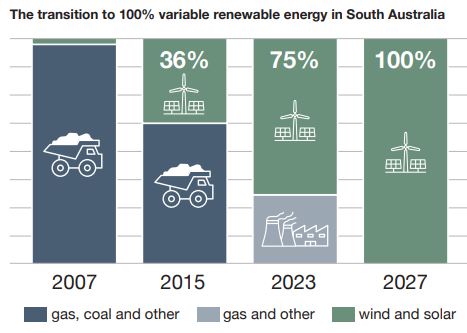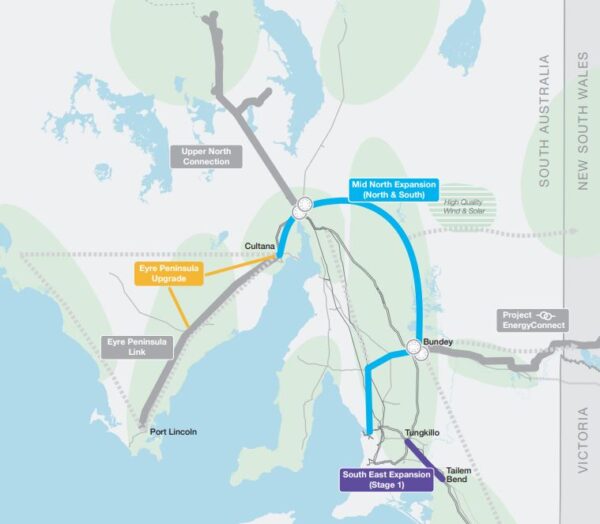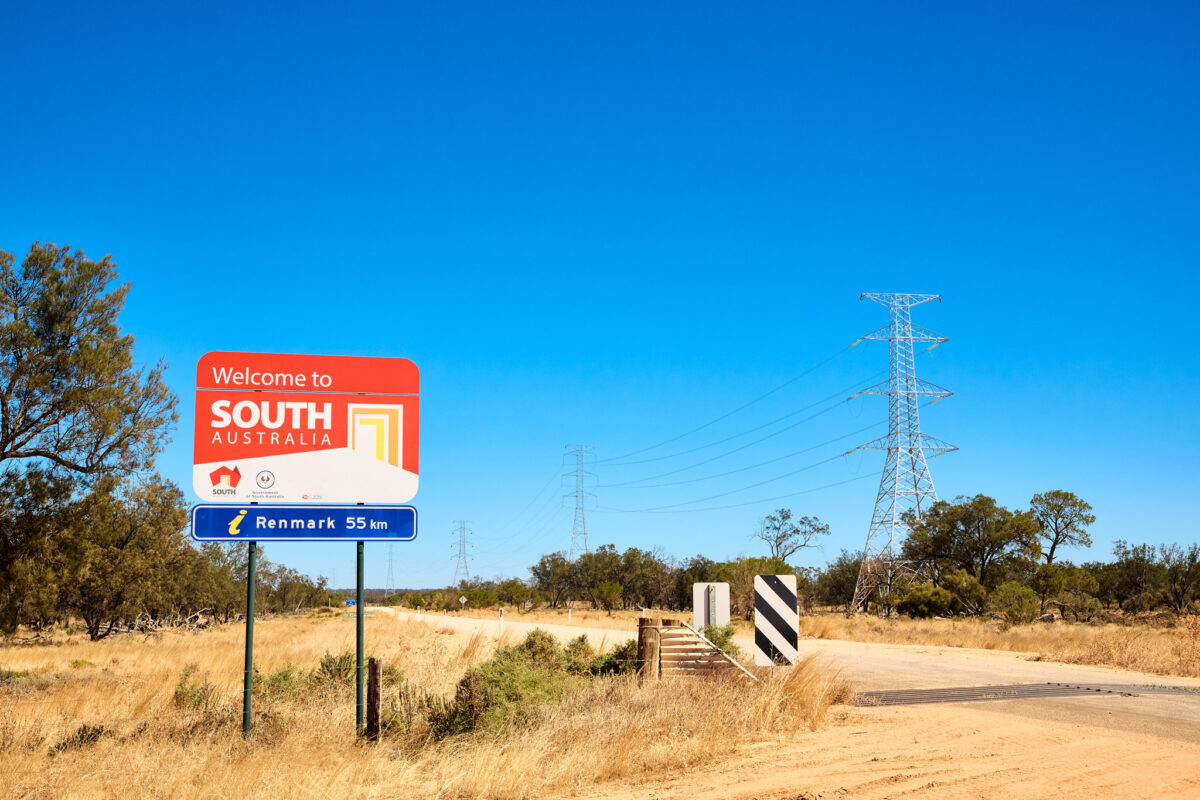Electricity transmission network operator ElectraNet has released its plans to support South Australia’s transition to 100% net renewable energy on an annual basis by 2027 and cope with what it said will be unprecedented energy demand growth.
South Australia currently averages 75% net variable renewable energy on an annual basis, and is regularly achieving 100% instantaneous variable renewable energy generation, driven by the uptake of large-scale wind and solar resources and rooftop PV.
There is more than 3,000 MW of large-scale wind and solar generation connected to the network and over the past six years, rooftop PV capacity has increased threefold to 2,200 MW.
ElectraNet, in its new Network Transition Strategy, does however warn that the energy transformation is far from complete with emerging demand growth driven by green re-industrialisation and electrification of the economy presenting a major challenge.
ElectraNet Chief Executive Officer Simon Emms said currents analysis suggests that about 1,000 MW of additional load will connect to the transmission network by 2030.
“As we enter the next phase of the energy transformation, South Australia is now seeing a level of interest from new, large electricity loads not seen for a very long time,” he said.
“The electricity demand outlook in South Australia is rapidly growing. Interest in new load connections currently exceeds 2,000 MW, driven by electrification and green reindustrialisation of the economy as loads seek access South Australia’s clean energy.”
ElectraNet said the growing demand and increasing connection of intermittent renewable generation at both transmission and distribution levels is creating greater variability in electricity generation and is challenging the power system’s technical limits, presenting new challenges to reliability, affordability and system security.

Emms said ElectraNet has delivered major transmission line updates in recent years and has invested in four large synchronous condensers but conceded ongoing development of the transmission network will be essential to manage the energy transition.
“The major projects we have undertaken and the groundwork we have laid has positioned us well to meet the challenges of the transition to date,” he said.
“This includes more than 1,000 kilometres of new transmission lines over the last five years on projects like Project EnergyConnect, the new high voltage interconnector to New South Wales and Eyre Peninsula Link, and the installation of synchronous condensers.”
ElectraNet said the new Network Transition Strategy lays out a framework to manage these challenges. The strategy focuses on developing a capable transmission network to ensure energy reliability; maintaining a secure and resilient power system; and managing increasing system complexity and risk.
Emms said ElectraNet is already progressing priority projects that will form an essential part of the ‘network backbone’ to meet the state’s future energy needs.
“Our immediate priorities include the Mid-North Expansion (North and South) which forms an essential part of the network backbone to enable higher transfers of renewable energy to meet demand growth and ensure security of supply to Adelaide,” Emms said.
Other projects required include the South-East expansion and a further potential upgrade of the network on Eyre Peninsula to increase transfer capability and unlock renewable resources in the region.

Image: ElectraNet
ElectraNet also acknowledged an increasing need for firming capacity and energy storage on the network to help manage the growing level of variable energy resources.
It also said a range of further actions, including system services and emergency control schemes and uplift in systems and capabilities, will be required to manage the energy transition.
This content is protected by copyright and may not be reused. If you want to cooperate with us and would like to reuse some of our content, please contact: editors@pv-magazine.com.









2 comments
By submitting this form you agree to pv magazine using your data for the purposes of publishing your comment.
Your personal data will only be disclosed or otherwise transmitted to third parties for the purposes of spam filtering or if this is necessary for technical maintenance of the website. Any other transfer to third parties will not take place unless this is justified on the basis of applicable data protection regulations or if pv magazine is legally obliged to do so.
You may revoke this consent at any time with effect for the future, in which case your personal data will be deleted immediately. Otherwise, your data will be deleted if pv magazine has processed your request or the purpose of data storage is fulfilled.
Further information on data privacy can be found in our Data Protection Policy.